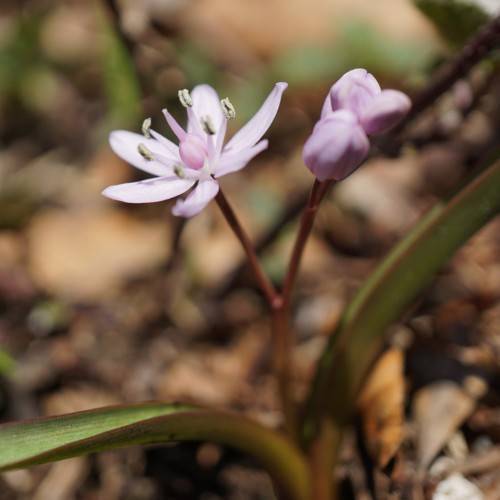
scilla
Scilla bifolia 'Rosea'
Cycle:
Perennial
Watering:
Average
Hardiness Zone:
3 - 8
Flowers:
Flowers
Sun:
Full sun,part shade
Growth Rate:
Low
Maintenance:
Low
Care Level:
Moderate
watering
Scilla plants (Scilla bifolia 'Rosea') need moderate to little watering. During the spring and summer months, water the plant about once a week, focusing on the soil around the plant's base. In the fall, reduce watering frequency to about once every 2 weeks. In winter, no watering is necessary, as the plant enters a state of dormancy. Make sure that the soil is allowed to dry out between waterings and avoid overwatering. Water in the early morning or late afternoon to prevent evaporation and to give the plant ample time to absorb the moisture.
sunlight
Scilla (Scilla bifolia 'Rosea') plants need full sunlight in the morning and partial shade in the afternoon. They thrive when placed in an area that receives 6 to 8 hours of sunlight each day. If they receive too much direct sunlight, their leaves may become scorched. Partial shade during the hottest part of the day will protect the plants from the intense heat. Keeping Scilla in bright indirect sunlight is ideal for its growth.
pruning
Scilla (Scilla bifolia 'Rosea') is a low-growing, spring-flowering bulb that prefers lightly shaded areas. Pruning for this plant species should be carried out once the flowering period has come to an end, typically by the end of spring. During the pruning process, it is important to remove any dead foliage or bloom stalks, as well as cutting back any long stems or foliage. Pruning should not be carried out too heavily or too often, as the plant may not perform as well as normal. In most cases, light pruning should be sufficient.
